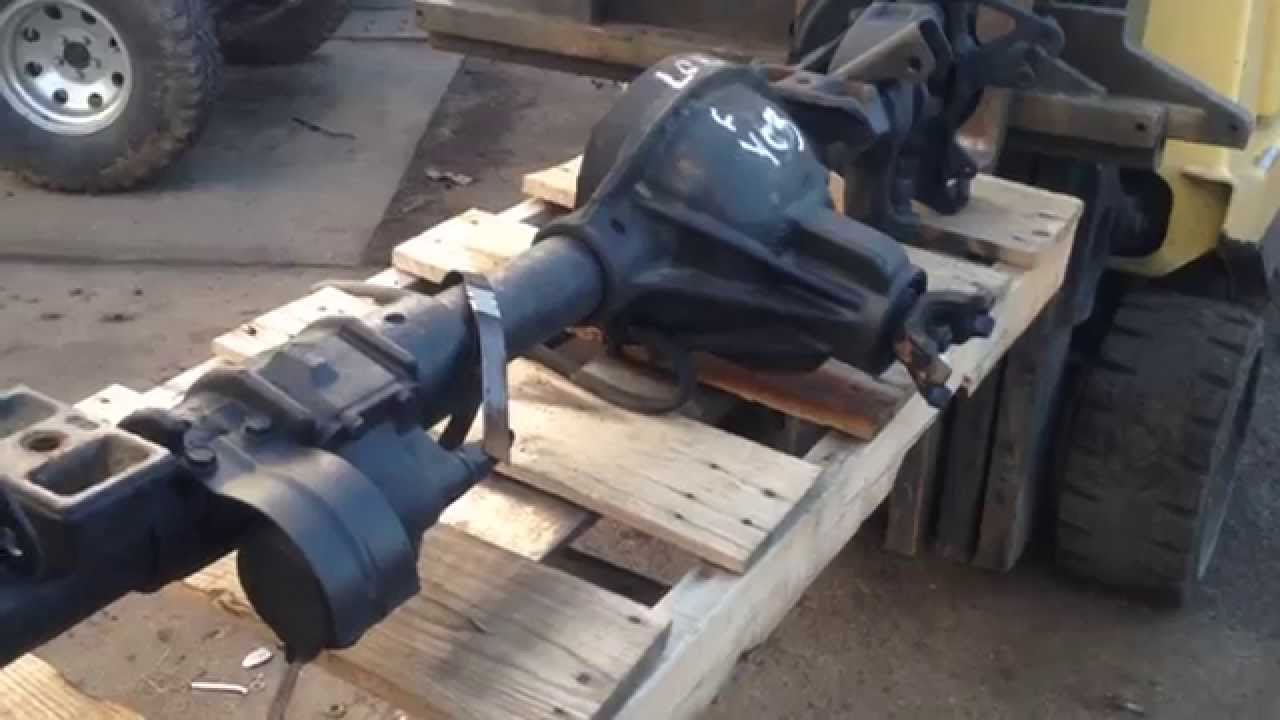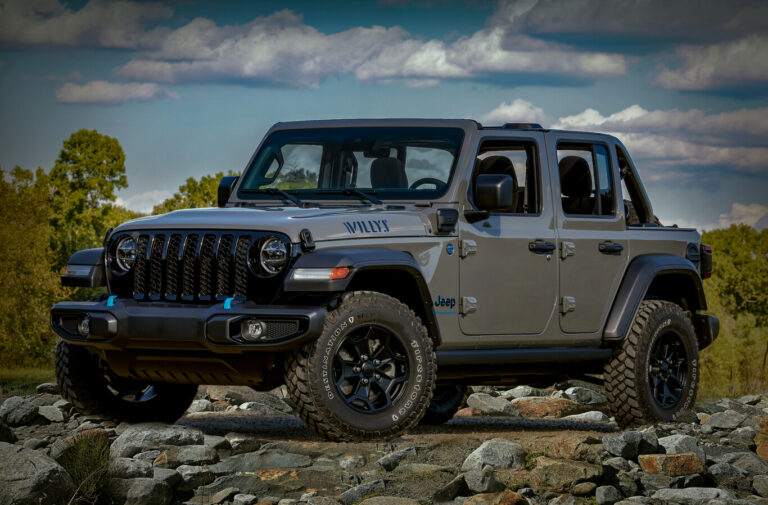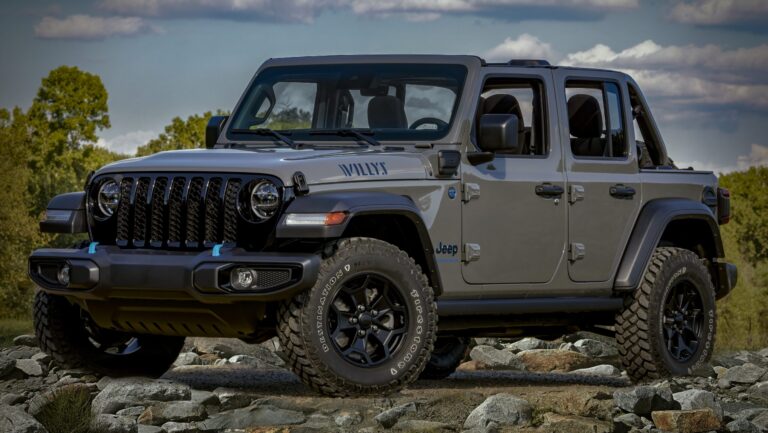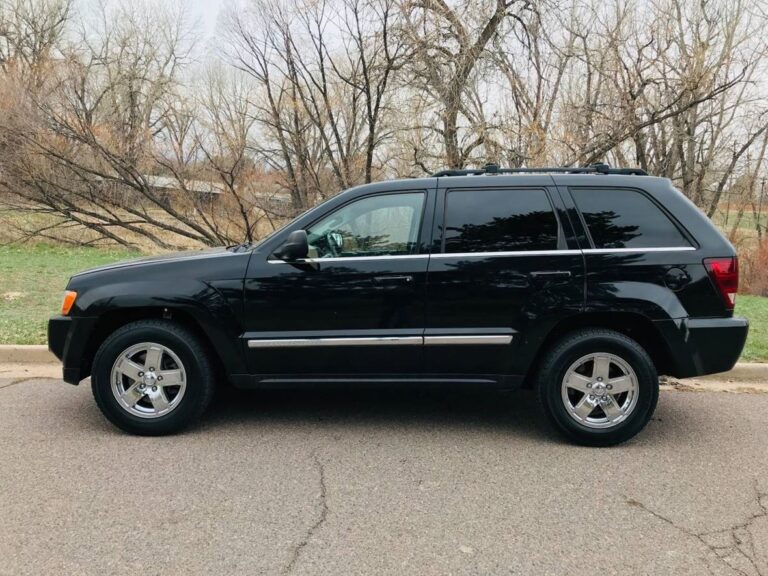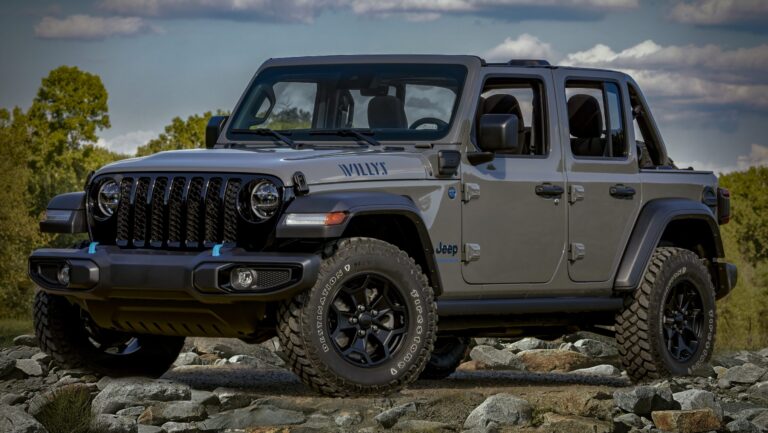Jeep YJ Axles For Sale: Your Comprehensive Guide to Upgrading and Maintaining Your Wrangler
Jeep YJ Axles For Sale: Your Comprehensive Guide to Upgrading and Maintaining Your Wrangler jeeps.truckstrend.com
The Jeep YJ Wrangler, produced from 1987 to 1995, holds a special place in the hearts of off-road enthusiasts. Known for its iconic square headlights and robust, yet straightforward, design, the YJ remains a popular choice for trail rigs, daily drivers, and restoration projects. At the very core of its legendary off-road capability are its axles – the unsung heroes that transfer power to the wheels and bear the brunt of every bump, rock, and rut. For YJ owners, aspiring owners, or those embarking on a custom build, the phrase "Jeep YJ axles for sale" often marks the beginning of a crucial search. Whether you’re replacing a damaged component, seeking an upgrade for larger tires, or building a formidable off-road machine from the ground up, understanding the nuances of YJ axles is paramount. This comprehensive guide will navigate you through everything you need to know when considering Jeep YJ axles for sale, ensuring you make an informed decision for your next adventure.
Understanding Jeep YJ Axles: Stock Configurations and Their Characteristics
Jeep YJ Axles For Sale: Your Comprehensive Guide to Upgrading and Maintaining Your Wrangler
Before diving into the market for Jeep YJ axles for sale, it’s essential to understand what came stock in these vehicles. The YJ utilized different axles for the front and rear, with slight variations across its production run.
-
Front Axle: Dana 30
- Overview: The Dana 30 was the standard front axle across all YJ models. It’s a reasonably strong axle for stock tires and light to moderate off-roading.
- Variations: Early YJs (1987-1994) typically came with a high-pinion, reverse-cut Dana 30, which is generally considered stronger due to the pinion gear contacting the ring gear on the drive side. The 1995 YJ sometimes featured a low-pinion, standard-cut Dana 30, similar to the TJ.
- Strengths: Adequate for most stock applications, good ground clearance (high-pinion), readily available parts.
- Weaknesses: Prone to breaking axle shafts and U-joints with larger tires (33 inches and up) or aggressive driving. The ring and pinion can be a weak point under extreme stress.

-
Rear Axle: Dana 35C and Dana 44
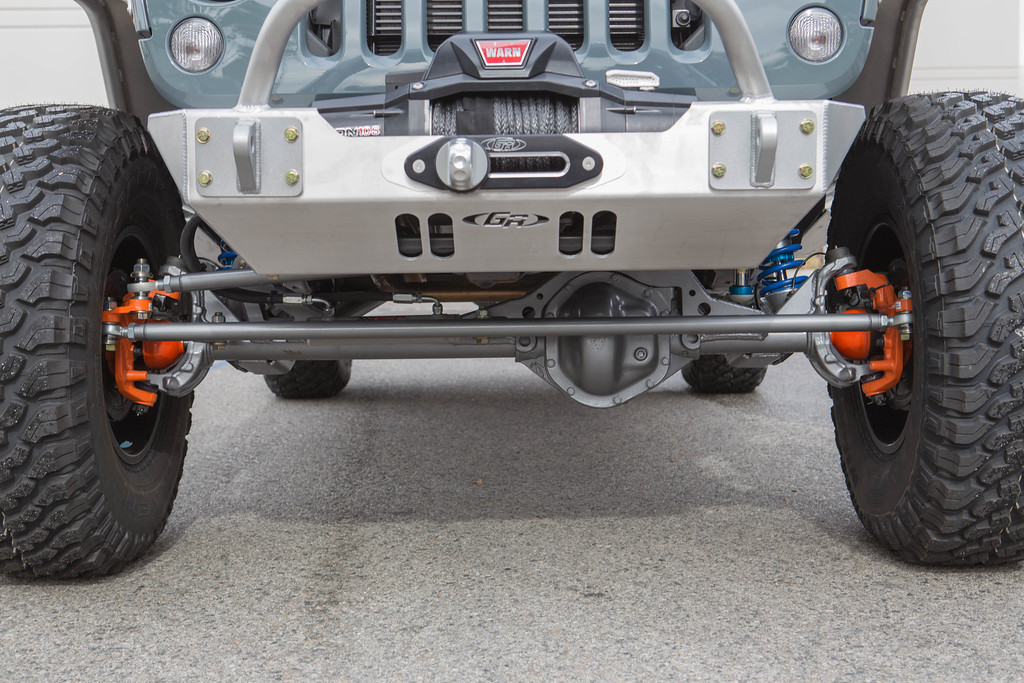
- Dana 35C: This was the most common rear axle found in YJs. It’s an adequate axle for street driving and mild off-roading but is widely regarded as the weakest link in the YJ drivetrain for serious trail use.
- Strengths: Lightweight, common, inexpensive to replace.
- Weaknesses: Its C-clip axle retention design can be a concern, and the 27-spline axle shafts and small ring and pinion are very susceptible to breakage with larger tires (31 inches and up) or lockers.

- Dana 44: A much sought-after rear axle, the Dana 44 was an optional upgrade, typically found in YJs equipped with the "tow package" or certain special editions. It’s significantly stronger than the Dana 35C.
- Strengths: Non-C-clip design (axle shafts are retained by bolts at the flange), larger 30-spline axle shafts, larger ring and pinion, making it much more robust for off-road use and larger tires (up to 35 inches).
- Weaknesses: Rarer to find, thus more expensive when available.
- Dana 35C: This was the most common rear axle found in YJs. It’s an adequate axle for street driving and mild off-roading but is widely regarded as the weakest link in the YJ drivetrain for serious trail use.
-
Common Gear Ratios: YJs came with various gear ratios depending on the engine and transmission, including 3.07, 3.55, 3.73, and 4.10. It’s crucial that the front and rear axle gear ratios match precisely to avoid drivetrain binding and damage.
-
Bolt Pattern: All YJ axles feature a 5×4.5 inch wheel bolt pattern.
The Quest for YJ Axles: Why Buy Used?
When searching for "Jeep YJ axles for sale," you’re most likely looking at used units. There are several compelling reasons why this is a popular route:
- Cost-Effectiveness: New aftermarket axle assemblies can cost thousands of dollars. Used stock or lightly modified YJ axles offer a significantly more budget-friendly alternative for repairs, replacements, or project builds.
- Availability: With thousands of YJs produced, there’s a relatively steady supply of used axles from donor vehicles, wrecked Jeeps, or those being parted out.
- Direct Fit: For YJ owners, acquiring another set of YJ axles means a direct bolt-in replacement, minimizing fabrication and installation headaches compared to adapting axles from other vehicles.
- Foundation for Upgrades: Even if you start with a stock YJ axle, the housing provides a solid foundation for internal upgrades like stronger axle shafts, lockers, and re-gearing, which can be done incrementally as budget allows.
- Project Versatility: YJ axles are a popular choice for custom buggies or lightweight vehicle swaps due to their relatively narrow width and common bolt pattern.
However, buying used also comes with considerations, primarily the unknown history and potential for hidden wear or damage. This is why a thorough inspection process is crucial.
Navigating the Market: Types of YJ Axles Available
When you encounter "Jeep YJ axles for sale," they typically fall into a few categories based on their condition and modifications:
- Untouched Stock Axles: These are pulled directly from a donor vehicle and sold as-is. They are the most common and often the cheapest option. Expect signs of wear, rust, and potentially worn-out components like U-joints, ball joints, or seals. Ideal for direct replacement on a budget or as a base for a full rebuild.
- Refurbished/Rebuilt Stock Axles: Some sellers or shops will offer YJ axles that have been cleaned, inspected, and had common wear items (seals, bearings, U-joints) replaced. These command a higher price but offer more peace of mind regarding their immediate usability.
- Upgraded Stock Axles: These are stock YJ axle housings that have been modified with aftermarket components. This might include:
- Re-geared axles: To accommodate larger tires or specific off-road performance needs.
- Locked axles: Equipped with an automatic or selectable locker for improved traction.
- Chromoly axle shafts: Stronger than stock shafts to handle more abuse.
- Heavy-duty differential covers: For added protection.
These are the most desirable for serious off-roaders but also the most expensive in the used market.
- Custom/Heavy-Duty YJ Axle Builds: Less common, but sometimes you might find axles built specifically for YJs using stronger components or even custom housings, though these are typically new aftermarket assemblies rather than "used YJ axles."
Your Buying Guide: What to Inspect Before You Buy
Purchasing Jeep YJ axles for sale requires a meticulous inspection to avoid costly surprises. Here’s a checklist:
- Visual Inspection for Damage:
- Bent Tubes: Look down the length of the axle tubes. Any visible bowing or bending is a deal-breaker, as it indicates severe stress or impact.
- Rust: Surface rust is common and generally not an issue. Excessive, deep, or flaky rust, especially around welds or mounting points, can indicate structural compromise.
- Cracks: Check the differential housing, control arm mounts, spring perches, and shock mounts for any signs of cracks.
- Leaking Seals: Look for oil residue around the pinion seal, differential cover, and axle shaft seals (at the knuckles for the front, at the ends of the tubes for the rear). Minor leaks might be a simple seal replacement, but major leaks indicate neglect.
- Fluid Check (if possible): If the seller allows, remove the differential cover (or at least the fill plug).
- Fluid Condition: Look for milky fluid (water contamination) or a strong burnt smell (overheated gears).
- Metal Shavings: A small amount of metallic sludge on the drain plug magnet is normal, but large chunks or excessive fine glitter indicate severe gear wear or impending failure.
- Play Check:
- Pinion Play: With the driveshaft removed (or by hand), try to rotate the pinion flange. A small amount of rotational play is normal, but excessive clunking or noticeable up-and-down/side-to-side movement indicates worn pinion bearings.
- Axle Shaft Play: For the front, check for excessive play at the U-joints. For the rear Dana 35C, check for excessive in-and-out play of the shafts (C-clip wear).
- Gear Ratio Verification: Don’t rely solely on the seller’s word or a faded tag. If possible, verify the gear ratio by counting the teeth on the ring and pinion (requires removing the diff cover) or by rotating the pinion and counting wheel rotations (less precise).
- Brakes: Inspect the condition of rotors/drums, calipers/wheel cylinders, and brake lines. While often replaced, their condition can give insight into overall maintenance.
- Included Components: Confirm what’s included: shafts, differential, brakes, steering components (for front axle), spring perches, control arm mounts. Missing components will add to your cost.
- Ask Questions: Inquire about the axle’s history, mileage, why it’s being sold, and any known issues. A transparent seller is a good sign.
Where to Hunt for Jeep YJ Axles For Sale
Finding the right Jeep YJ axles for sale requires knowing where to look:
- Online Marketplaces:
- Craigslist and Facebook Marketplace: Excellent for local finds, allowing for in-person inspection and avoiding shipping costs. Use specific search terms like "Jeep YJ Dana 30," "Jeep YJ Dana 35," "Jeep YJ Dana 44."
- eBay: Wider reach, but shipping heavy axles can be expensive. Good for rarer finds or specialized rebuilt units.
- Specialized Jeep Forums and Facebook Groups: Many dedicated YJ forums (e.g., JeepForum.com, WranglerForum.com) and Facebook groups have "for sale" sections where members list parts. These communities often provide valuable advice and can connect you with reputable sellers.
- Off-Road Salvage Yards/Junkyards: These are treasure troves for used parts. Call ahead to see if they have YJs in stock and if they pull axles.
- Dedicated Jeep Parts Dealers (Used/New): Some larger off-road shops or specialized salvage operations focus solely on Jeeps and may have a stock of inspected and sometimes rebuilt axles.
- Local Jeep Clubs: Networking with local enthusiasts can lead to word-of-mouth leads or opportunities to buy from fellow club members.
Beyond the Purchase: Installation, Upgrades, and Maintenance
Once you’ve secured your Jeep YJ axles for sale, the work isn’t over.
- Pre-Installation Upgrades: Before bolting them onto your YJ, consider replacing common wear items like:
- Ball Joints (front): Critical for steering and suspension integrity.
- U-Joints (front axle shafts): If not already chromoly.
- Wheel Bearings and Seals: Essential for smooth operation and preventing leaks.
- Brake Components: Rotors, pads, calipers, or drums and shoes.
- Differential Cover: Consider a heavy-duty, cast iron cover for added protection.
- Installation: Ensure you have the proper tools, a safe workspace (jack stands are a must), and torque specifications. If you’re not comfortable with mechanical work, consult a professional.
- Fluid Fill: Always fill axles with fresh, high-quality gear oil. Check your owner’s manual or a service guide for the correct weight and type, and remember to add friction modifier if you have a limited-slip differential.
- Maintenance: Regular maintenance is key to axle longevity.
- Fluid Changes: Follow recommended intervals, especially after water crossings.
- Leak Checks: Periodically inspect for leaks around seals and covers.
- Inspection: During oil changes or tire rotations, visually inspect for damage, loose bolts, or worn components.
- U-Joint Lubrication: If equipped with greaseable U-joints, lubricate them regularly.
Overcoming Challenges in Your Axle Journey
- Finding Matched Pairs: It can be challenging to find a front and rear YJ axle pair with the exact same gear ratio, especially the rarer Dana 44 rear. Be prepared to re-gear one or both axles to match if you can’t find a perfect set.
- Shipping Costs: Axles are heavy and bulky. Shipping can be expensive, often making local pickup the most economical option. Factor this into your budget.
- Unknown History: The biggest challenge with used parts. Mitigate this by thorough inspection and asking detailed questions.
- Bent Tubes: As mentioned, this is a fatal flaw. Be extremely vigilant during inspection.
Jeep YJ Axles For Sale: Estimated Price Guide
Please note that these are estimated price ranges and can vary significantly based on condition, location, included components (e.g., brakes, steering linkage), and any modifications. Always confirm with the seller.
| Axle Type | Condition/Modification | Estimated Price Range (USD) | Typical Inclusions | Notes |
|---|---|---|---|---|
| Front Dana 30 | Stock, As-Is | $150 – $400 | Housing, Shafts, Diff, Knuckles, Unit Bearings | Expect wear; likely needs new ball joints, U-joints, seals. Good for budget replacement or rebuild. |
| Refurbished/Rebuilt | $400 – $800 | Replaced seals, bearings, good U-joints/ball joints | More immediate bolt-in, less work required. | |
| Upgraded (e.g., Locker) | $800 – $1,500+ | Locker, potentially re-geared, chromoly shafts | Significant performance upgrade. Price highly dependent on brand of locker/gears. | |
| Rear Dana 35C | Stock, As-Is | $100 – $300 | Housing, Shafts, Diff, Brakes | Most common, least expensive. Suitable for stock applications, not recommended for serious off-roading. |
| Refurbished/Rebuilt | $300 – $600 | Replaced seals, bearings, brakes inspected | Better condition, but still limited by inherent strength of D35. | |
| Upgraded (e.g., Locker) | $600 – $1,000+ | Locker, potentially chromoly shafts | Can improve traction, but still vulnerable with larger tires. Often seen as a temporary solution. | |
| Rear Dana 44 | Stock, As-Is | $800 – $1,500+ | Housing, Shafts, Diff, Brakes | Highly sought after. Price varies heavily based on gear ratio and overall condition. Often needs refurbishment. |
| Refurbished/Rebuilt | $1,500 – $2,500+ | Replaced seals, bearings, good brakes | Premium for a ready-to-install, stronger rear axle. | |
| Upgraded (e.g., Locker) | $2,500 – $4,000+ | Locker, re-geared, chromoly shafts | The ultimate YJ rear axle upgrade. Price depends on component quality. | |
| Matched Pair (D30/D35) | Stock, As-Is | $200 – $600 | Front Dana 30, Rear Dana 35 | Common pairing. Often requires re-gearing if ratio isn’t ideal or if one axle is swapped. |
| Matched Pair (D30/D44) | Stock, As-Is | $1,000 – $2,500+ | Front Dana 30, Rear Dana 44 | Desirable upgrade. Price depends heavily on D44 condition and gear ratio match. |
Note: Prices do not include shipping, which can add hundreds of dollars. Always verify what’s included and inspect thoroughly.
Frequently Asked Questions (FAQ) about Jeep YJ Axles For Sale
Q1: What’s the main difference between a Dana 30 and a Dana 35C?
A1: The Dana 30 is the front axle, while the Dana 35C is a rear axle. The Dana 35C is significantly weaker than the Dana 30 in terms of its ability to handle larger tires and off-road abuse, primarily due to its smaller ring and pinion and C-clip axle retention.
Q2: Can I put a Dana 44 in my YJ?
A2: Yes, a Dana 44 was an optional factory upgrade for the YJ, making it a direct bolt-in replacement for the Dana 35C. It’s a highly recommended upgrade for anyone running 33-inch tires or larger, or using a locker.
Q3: Do YJ axles fit other Jeeps like a TJ or XJ?
A3: While they share some similarities (like the Dana 30 front), the YJ axles have different mounting points (leaf springs) and widths compared to the coil-sprung TJ/XJ. Swapping them into other Jeeps would require significant fabrication.
Q4: How do I know what gear ratio my axles have?
A4: The most accurate way is to remove the differential cover and count the teeth on the ring gear and the pinion gear, then divide the ring gear tooth count by the pinion tooth count (e.g., 41 ring teeth / 10 pinion teeth = 4.10 ratio). Some axles have a tag on the differential cover bolts indicating the ratio.
Q5: Is it worth buying used YJ axles, or should I save for new ones?
A5: For most YJ owners, buying used is a cost-effective solution for replacement or moderate upgrades. If you’re building a highly customized, extreme off-road rig, new aftermarket axles (e.g., Dana 60s) might be a better long-term investment, but they come at a much higher price point.
Q6: What’s the strongest stock YJ rear axle?
A6: The Dana 44 is the strongest stock rear axle available for the Jeep YJ.
Conclusion
The search for "Jeep YJ axles for sale" is more than just finding parts; it’s about investing in the heart of your Wrangler’s performance and longevity. Whether you’re aiming for a reliable daily driver, a capable weekend warrior, or an extreme rock crawler, understanding the different types of YJ axles, knowing where to find them, and meticulously inspecting your potential purchase are crucial steps. By arming yourself with this knowledge, you can confidently navigate the market, secure the right axles for your needs, and ensure your iconic square-headlighted Jeep YJ continues to conquer trails for years to come. Your YJ’s next adventure starts with a solid foundation, and the right axles are key to that foundation.
